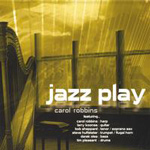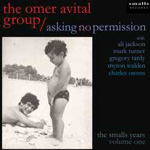Home » Jazz Articles » African Jazz » North Africa Roundup: Algeria and Morocco
North Africa Roundup: Algeria and Morocco
 Souad Massi
Souad Massi
Mesk Elil (Honeysuckle)
Wrasse Records
2005
You have to wonder why some Algerians subjected Souad Massi to spitting and death threats (among other forms of hate) given the spirit of embrace, reflection and openness that permeates her music, but sometimes it's better just to pack up and move on. After six years in Paris, Massi is back on record with her third release, Mesk Elil (Honeysuckle), a continuation of the exuberant musical style and personal, melancholic lyrical bent that has characterized her work all along.
It's a bit unfair to hold Massi to the standards of her past work, but to speak honestly, Mesk Elil is not quite as good as Massi's last album, Deb (Heart Broken). It all boils down to the two reasons why her music is most compelling: one, Massi's voice and lyrics are soulful and moving; and two, she places them in a globally conscious, shifty amalgam of African and European styles. A recording that emphasizes her vocal presence and distills the influences (like Deb) is going to be better than one where they're cloaked in heavy production and bent into the groove.
That said, it's really hard not to succumb to the romance and emotional warmth of this record. Massi's voice is commandingly soulful but understated, and when she sings, she speaks with frank honesty. It's easy to get caught up in the catchy, bouncy grooves and miss out on the words, but you'd be foolish not to check the lyrics (in English in the liner notes) and think a few minutes about the poetry that Massi twists into honey.
Stylistically, these ten songs (plus a bonus remix) span a pretty immense landscape. They tend to be minor key and melancholic, but they draw from sounds characteristic of West Africa (check out Daby Touré's singing on "I Won't Forget My Roots" or the Cape Verdean morna on "Soon"), North Africa (an Arabic lilt and Algerian rhythms persist throughout), and Spain (flamenco accents, with up to four guitars playing at once).
Other than the out of place remix at the end of the album (four to the floor beats just flatten this music) and the limp part-English song "Tell Me Why," Mesk Elil is a wonderfully comprehensive and honest statement of identity from a creative artist who has only just begun to flower.
 Dris El Maloumi
Dris El Maloumi
Maroc: L'Ame Dansee (Morocco: The Dancing Soul)
Buda Musique
2005
Like the guitar, its relatively newborn descendant, the oud is linked with a classical tradition of performance, but the oud's roots are a hell of a lot deeper and more diverse. Moroccan virtuoso Dris El Maloumi approaches the oud with a spirit of discovery on The Dancing Soul, consciously drawing from contemporary and tribal sources, cleverly bringing them into unexpected juxtaposition.
To be clear up front, this is a recital, not a collection of catchy songs. Maloumi conceived of these ten pieces (two to twelve minutes long) as a suite, each reflecting a mood and embodying specific styles, and he takes his time with the music. "The Moon," one of the few tracks with vocals, is full of reflective pauses and held tones with pronounced resonance. Drawing from Berber musical heritage, the piece coaxes rather than compels.
While the focus of The Dancing Soul is El Maloumi's oud playing, he receives sensitive and responsive support from percussionist Lahouncine Baquir on daf, bendir and darbouka. Baquir takes a brief couple of minutes at center stage on "Notes" touring South Moroccan styles. The title piece, which comes next, starts out as a relatively lively jaunt, then shifts into a more soft and subtle mode, carried along by a percolating five-part rhythm.
The Dancing Soul can be enjoyed on many levels. Its reflective mood and understated subtlety lend it naturally to meditation, but if you listen to the way El Maloumi shapes each note with its own character and momentum, you can find yourself equally transfixed by the way he plays his instrument. On top of that, the rhythms regularly shift from 4/4 to 6/8 to 5/4 and back, shaping the flow and phrasing along the way. And should you have half an hour to spend with the liner notes, then listen again, you'll find this suite a vivid essay in multicultural embrace.
 Various Artists
Various Artists
The Rough Guide to the Music of Morocco
World Music Network
2004
To many American and European ears, the music of Morocco has been distilled to occasional glimpses of gnawa trance music and distant reflections of Arab-Andalusian flamenco. But while only eight miles separate Europe from Africa at Gibraltar, Moroccan music is just as multicultural and diverse as its relatives from the north.
This Rough Guide presents a range of Moroccan music from traditional to modern (though mostly the latter) by eleven artists with very different approaches. It's an eye-opening collection, matched by crisp and insightful liner notes that detail the background of the country and its musical traditions, placing each entry in perspective. The most immediately catchy track comes first in the form of Nass Marrakech's "Zeze Meyel," a bouncy and enthusiastic song with lively percussion.
Two groups from Casablanca which made it big around the same time, Nass El Ghiwane and Jil Jilala, are represented by very different selections. The Jil Jilala song is pure fun and melismatic lilt, while "Mahmouna" builds from a quiet, direct poetic recital into a more reverent mode. They really just scratch the surface, but interested listeners will find abundant opportunities to enjoy these artists on record.
Not many people are aware of the Jewish musical traditions of North Africa, though Algerian pianist Maurice El Medioni tugged a few ears with Cafe Oran ten years ago. Emil Zrihan, who emigrated to Israel in 1967, keeps the flame of Sephardic music alive with an emotionally charged recital here. And breaking out with modern electronic production, the two Casablancan rappers known as Dar Gnawa join forces with Moroccan-born, London-based producer U-cef to do a musically flat but lyrically dense rap.
Tracks and Personnel
Deb Elil
Tracks: Kilyoum (Soon); Denya Wezmen (That's Life); Ilham (Inspiration); Mesk Elil (Honeysuckle); Manensa Asli Miwawa (I Won't Forget My Roots); Dar Djedi (My Grandfather's House); Hagda Wala Akter (There's Worse); Tell Me Why; Khalouni (Let Me); Malou (Why Is My Heart Sad); Mahli (remix).
Personnel: Souad Massi: guitars, vocals; Jean-Louis Solans, Jean-François Kellner, Djely Moussa Kouyaté, Daby Touré: guitars; Hamid Djouhri: guitars, lute, banjo; Pascal Danaé: guitars, vocals; Mohammed Benis, Floriane Bonnani, Sébastien Surel: violin; Edouardo Lubo, Emma Savouret: cello; Paul Radais: viola; Marie-Jeanne Serrero: string arrangements; Mino Cinelu: electroacoustic percussion, hand drums, cajon, metal percussion, djembé, udu; Rabah Khalfa: derbouka, vocals, bendir, tambourine, golal, karakabou; Moktar Samba: drums; Guy Nsangué: bass; Laurent Vernerey: bass; Abdelhamid Himaoui: ney; Ali Wagué: African flute; Hervé Clery, Abdel Zamzem, Jean-René Zapha: vocals.
Maroc: L'Ame Dansee
Tracks: Calme (Calmness); Nostalgie (Nostalgia); Lune (The Moon); Badinage; Notes/Naqarate;—me Dansée (The Dancing Soul); Enfance (Childhood); Résonance (Resonance); Élévation Même (The Elevation Itself); Marche (Promenade).
Personnel: Driss El Maloumi: oud; Lahoucine Baquir: daf, bendir, darbouka.
The Rough Guide to the Music of Morocco
Tracks: Zeye Meyel; Baba Aadi; Bay-Bay; Leilaa Lill; Touria; Mahmouna; Yedidim Hiou Zehirim; Hijra (Trad Mix); Taala Fine Ghadi; Lala Aisha; haliou Loudid Lamimtou.
Personnel: Nass Marrakech; Jil Jilala; Najm El Farah Essafi; Bnet Marrakech; Mohamed Amenzou; Nass El Ghiane; Emil Zrihan; U-Cef; Fatna Bent El Houcine; Hassan Hakmoun; Mustapha Bourgogne.
Tags
PREVIOUS / NEXT
Support All About Jazz
 All About Jazz has been a pillar of jazz since 1995, championing it as an art form and, more importantly, supporting the musicians who make it. Our enduring commitment has made "AAJ" one of the most culturally important websites of its kind, read by hundreds of thousands of fans, musicians and industry figures every month.
All About Jazz has been a pillar of jazz since 1995, championing it as an art form and, more importantly, supporting the musicians who make it. Our enduring commitment has made "AAJ" one of the most culturally important websites of its kind, read by hundreds of thousands of fans, musicians and industry figures every month.



















